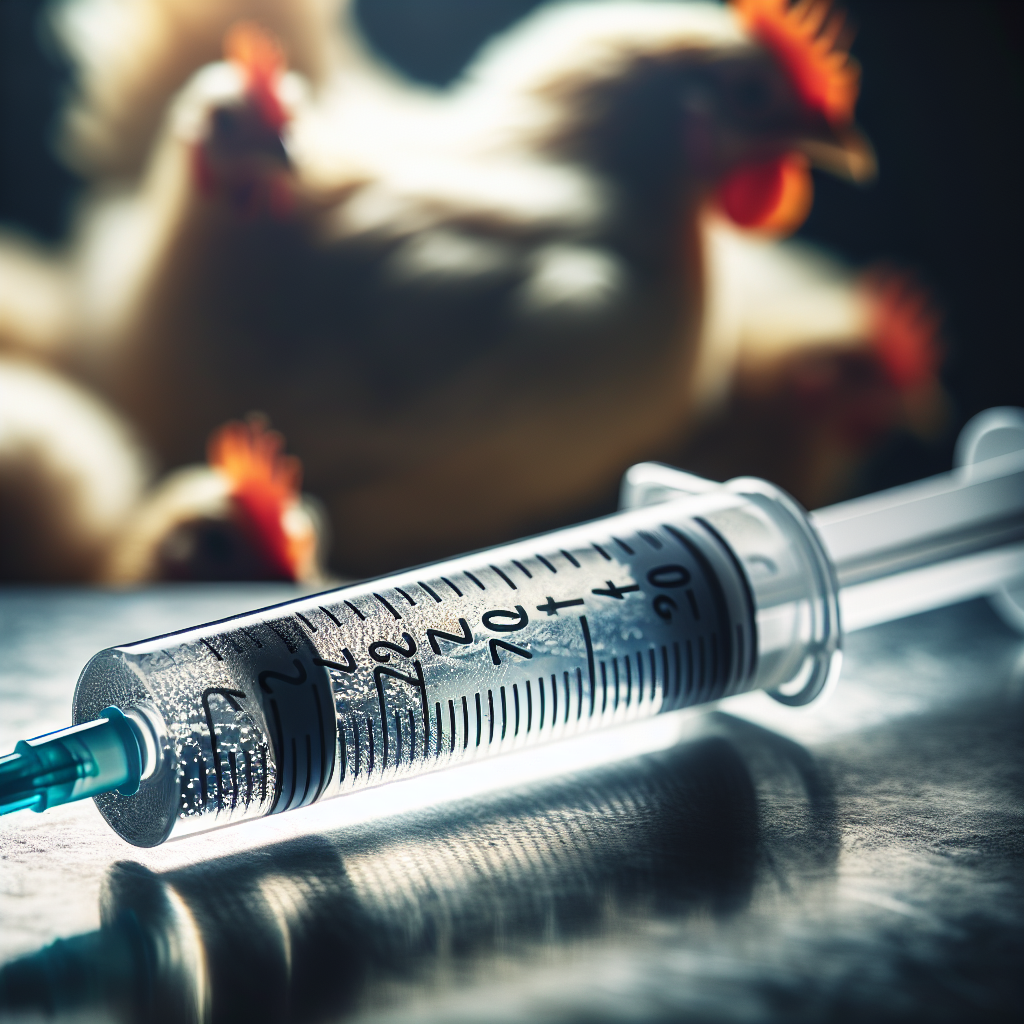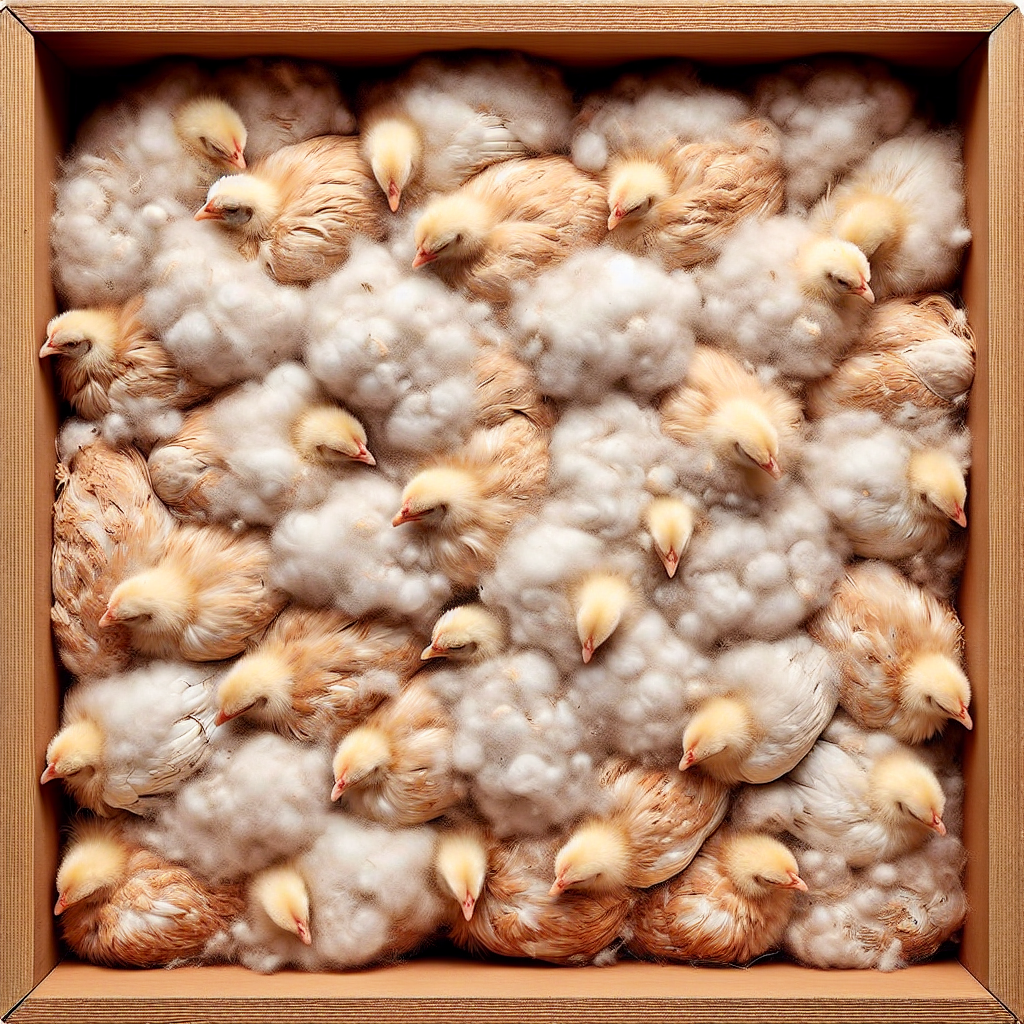Imagine a seemingly healthy flock of chickens suddenly falling ill and experiencing devastating consequences. This is the reality of Marek’s disease, a highly contagious and often deadly poultry disease. But fret not, as advancements in prevention and treatment methods have provided hope for farmers and backyard chicken enthusiasts alike. Join us as we explore the ins and outs of Marek’s disease, learning how to protect against it and how to manage it should it occur. Together, we can ensure the health and well-being of our feathered friends.
Understanding Marek’s Disease
Marek’s Disease is a highly contagious viral disease that primarily affects poultry, particularly chickens. It is caused by the Marek’s Disease virus (MDV) and is characterized by the development of tumors in nerve tissues, organs, and other parts of the body. The disease can lead to significant economic losses for poultry farmers due to mortality rates and reduced productivity. Understanding the causes, symptoms, and prevention methods of Marek’s Disease is essential for poultry farmers to protect their flocks and maintain a healthy and thriving poultry farm.
What is Marek’s Disease?
Marek’s Disease is caused by the Marek’s Disease virus (MDV), which belongs to the family Herpesviridae. The virus can be found in feather dander, secretions, and excretions of infected birds. It is highly contagious and can spread easily through direct contact between infected and susceptible birds or through the inhalation of contaminated dust particles. Once the virus enters the host’s body, it replicates in the feather follicle epithelium and then spreads to the lymphoid organs, causing the development of tumors.
Causes of Marek’s Disease
The main cause of Marek’s Disease is the Marek’s Disease virus (MDV). However, various factors contribute to the spread and severity of the disease. These factors include overcrowding, poor ventilation, stress, and the presence of other diseases. Birds that are genetically susceptible to MDV are also more likely to develop the disease. It is crucial for poultry farmers to implement effective biosecurity measures to minimize the risk of introduction and spread of the virus within their flocks.
Symptoms of Marek’s Disease
Marek’s Disease can present a wide range of symptoms, depending on the affected organs and the severity of the infection. Common symptoms include paralysis of the wings or legs, loss of appetite, weight loss, gradual decline in egg production, eye abnormalities, such as irregular pupil size or blindness, and the development of gray or white iris plaques. In some cases, infected birds may experience sudden death without showing any prior signs of illness. Recognizing these symptoms is vital for early detection and prompt implementation of prevention or treatment measures.
Preventing Marek’s Disease
Prevention is the key to controlling Marek’s Disease on poultry farms. The following strategies can help minimize the risk of the disease:
Vaccination
Vaccination is the most effective means of preventing Marek’s Disease in poultry. Vaccines containing attenuated strains of the virus can stimulate the immune system, providing birds with protection against future infections. It is important to follow the recommended vaccination protocols and maintain a proper vaccination schedule to ensure the vaccine’s efficacy.
Biosecurity Measures
Implementing strict biosecurity measures is essential to prevent the introduction and spread of Marek’s Disease on poultry farms. This includes controlling access to the farm, preventing contact with wild birds or other potential carriers, disinfecting equipment and vehicles, and maintaining a clean and hygienic environment.
Quarantine Protocols
Quarantine protocols should be established to separate newly arrived birds from the existing flock. This allows farmers to monitor the health status of the new birds and prevent the potential introduction of Marek’s Disease or other infections. Quarantine should last for a sufficient period, allowing any potential signs of illness to manifest.
Treating Marek’s Disease
Unfortunately, there is no cure for Marek’s Disease once a bird becomes infected. However, some treatment methods can help manage the symptoms and improve the affected bird’s quality of life:
Supportive Care
Providing supportive care to infected birds is essential. This includes maintaining ideal environmental conditions, such as optimal temperature and ventilation, to reduce stress and enhance the bird’s immune response. Adequate nutrition and hydration are also crucial to support the bird’s overall health and immune function.
Antiviral Medications
Antiviral medications may be used in some cases to mitigate the severity of the disease. These medications can help limit viral replication and reduce the spread of the virus within the body. However, their efficacy can vary, and they should be used under the guidance of a veterinarian.
Surgery
In severe cases of Marek’s Disease, surgery may be considered as a last resort option. Surgery can be performed to remove tumors or alleviate compression on nerves, improving the bird’s mobility and reducing pain. However, the success rate of surgical intervention can vary, and it is a complex procedure that should be carried out by experienced professionals.
Natural Remedies for Marek’s Disease
In addition to conventional treatments, some natural remedies may complement the management of Marek’s Disease:
Herbal Supplements
Certain herbal supplements, such as Echinacea and astragalus root, have immune-boosting properties and may support the bird’s natural defenses against viral infections. These supplements can be administered orally or included in the bird’s feed.
Homeopathic Treatments
Homeopathy is an alternative medical approach that uses highly diluted substances to stimulate the body’s healing response. Some homeopathic remedies may be used in conjunction with conventional treatments to support the bird’s overall well-being and immunity. However, it is crucial to consult with a qualified veterinarian or homeopathic practitioner before implementing such treatments.
Dietary Modifications
Optimizing the bird’s diet is essential to support its immune system and overall health. Including immune-boosting ingredients, such as garlic, turmeric, and probiotics, in the bird’s feed can potentially enhance its resistance to infections. Consultation with a poultry nutritionist or veterinarian is recommended to ensure that dietary modifications are safe and appropriate for the birds.
Managing Marek’s Disease in Poultry Farms
Managing Marek’s Disease requires a comprehensive approach that focuses on reducing the disease’s impact and preventing its spread within the flock. The following practices contribute to effective management:
Proper Sanitation Practices
Maintaining proper sanitation practices is crucial to minimize the risk of Marek’s Disease. This includes regular cleaning and disinfection of poultry houses, equipment, and vehicles. Additionally, proper waste management and removal of accumulations of dust or feather debris are important to create a clean and hygienic environment.
Culling Infected Birds
Once a bird is diagnosed with Marek’s Disease, culling may be necessary to prevent the spread of the virus to other birds. Infected birds should be euthanized in a humane manner, and their carcasses properly disposed of, following local regulations and guidelines.
Genetic Selection
Genetic selection plays a significant role in managing Marek’s Disease. Breeding for resistance to the disease can be achieved by selecting birds that have demonstrated genetic resistance or tolerance to MDV. This reduces the likelihood of the disease’s transmission to future generations and contributes to long-term disease control.
Marek’s Disease Research and Developments
Continuous research and development efforts are essential in the fight against Marek’s Disease. Some areas of focus include:
Diagnostic Tools
Developing accurate and efficient diagnostic tools is crucial for early detection and effective disease management. Researchers strive to improve testing methods that can detect the presence of the virus, determine the viral strain, and assess the bird’s immune response to infection.
Vaccination Improvements
Ongoing research aims to develop more effective and long-lasting vaccines against Marek’s Disease. Scientists are studying various vaccine formulations, delivery methods, and protocols to enhance the vaccine’s efficacy and provide better protection for poultry.
Genetic Resistance Studies
Understanding the genetic basis of resistance to Marek’s Disease is an area of active research. Scientists are exploring the genetic factors that contribute to resistance, with the goal of developing breeding strategies that can produce more disease-resistant poultry lines. This research can contribute to durable and sustainable disease control measures.
Conclusion
Marek’s Disease is a significant concern for poultry farmers worldwide, but with proper understanding, prevention, and treatment strategies, its impact can be minimized. Vaccination, biosecurity measures, and quarantine protocols are vital for preventing the introduction and spread of the disease. Supportive care, antiviral medications, and surgical options can improve the well-being of infected birds. Natural remedies, such as herbal supplements and dietary modifications, may offer complementary support. Effective management practices, including sanitation, culling infected birds, and genetic selection, contribute to long-term disease control. Ongoing research and developments in diagnostics, vaccinations, and genetic resistance studies hold promise for future advancements in Marek’s Disease prevention and management. With a comprehensive approach and continuous efforts, Marek’s Disease can be effectively managed, ensuring the health and well-being of poultry flocks.




